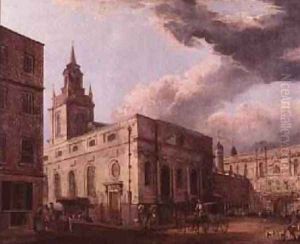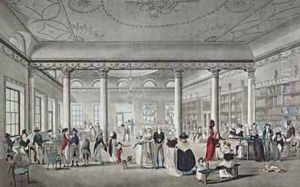Malton, Thomas Paintings
Thomas Malton, born in 1748 in London, England, was a distinguished British draughtsman, watercolourist, and aquatint engraver, primarily remembered for his works focusing on architectural and topographical subjects. His detailed and precise renderings of buildings and urban scenes, particularly of London and other notable cities, have made significant contributions to the historical understanding and appreciation of 18th-century British architecture and urban landscapes. Malton's expertise in perspective was also highly regarded, leading him to publish a notable work, 'A Complete Treatise on Perspective in Theory and Practice,' in 1775, which underscored his mastery of the subject and influence as an educator in the arts.
Malton's early life was steeped in the artistic milieu of the time, with his father, Thomas Malton the Elder, also being an architectural draughtsman as well as a teacher of perspective. This familial background provided the younger Malton with a solid foundation in the principles of drawing and perspective, which he would later refine and teach to others. Despite the potential for formal architectural training, Malton's career path leaned more towards the artistic representation of architecture rather than its practice. His works, characterized by their accuracy and aesthetic appeal, were highly sought after by patrons and collectors, contributing to his reputation as one of the leading figures in his field during the late 18th century.
In addition to his book on perspective, Malton produced a series of views of London that were published in the late 1790s. These works, often executed in aquatint, a method that allowed for a more painterly and tonal quality than traditional line engraving, captured the architectural elegance and urban vibrancy of the capital during a period of significant development and change. His views of the newly constructed buildings and fashionable streets of London provided a valuable record of the city's appearance at the turn of the 19th century.
Despite his contributions to British art and his role in documenting the architectural heritage of his time, Thomas Malton's work was somewhat overshadowed by contemporaries such as Paul Sandby and Joseph Mallord William Turner, both of whom also excelled in topographical and landscape watercolours. Nevertheless, Malton's legacy endures through his detailed prints and watercolours, his influential treatise on perspective, and his role in educating future artists. Thomas Malton passed away in 1804, but his works continue to be appreciated for their historical value and their skillful representation of the built environment.

